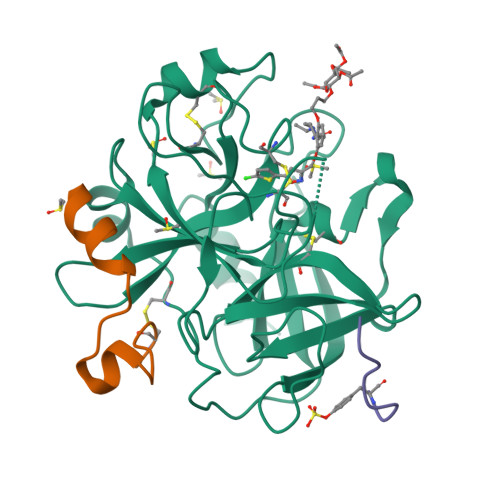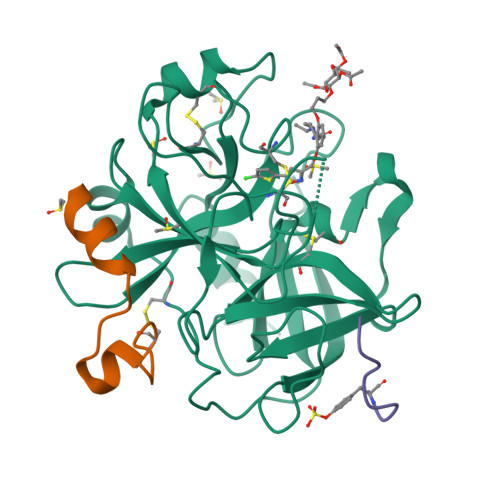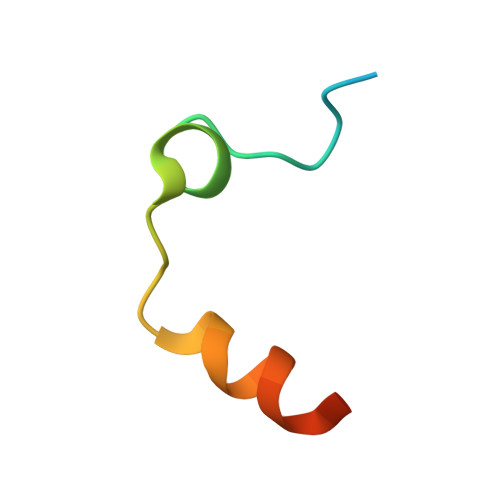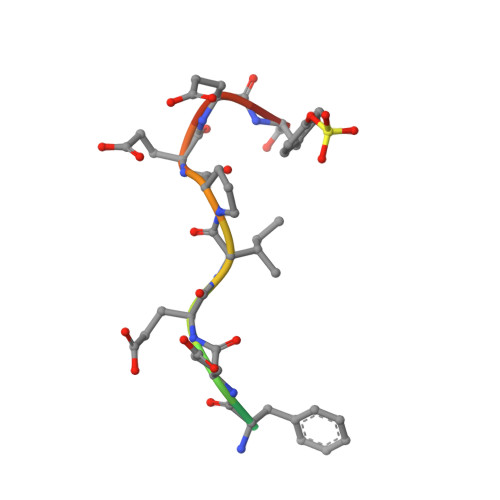How a beta-D-glucoside side chain enhances binding affinity to thrombin of inhibitors bearing 2-chlorothiophene as P1 moiety: crystallography, fragment deconstruction study, and evaluation of antithrombotic properties.
Belviso, B.D., Caliandro, R., de Candia, M., Zaetta, G., Lopopolo, G., Incampo, F., Colucci, M., Altomare, C.D.(2014) J Med Chem 57: 8563-8575
- PubMed: 25268757
- DOI: https://doi.org/10.1021/jm5010754
- Primary Citation of Related Structures:
6EO8, 6EO9 - PubMed Abstract:
The β-d-glucose-containing compound 3, bearing 2-chlorothiophene and 1-isopropylpiperidine moieties as binders of the S1 and S4 pockets, respectively, proved to be potent competitive inhibitor of factor Xa (fXa, Ki = 0.090 nM) and thrombin (fIIa, Ki = 100 nM). The potency of 3 increases, over the parent compound 1, against fIIa (110-fold), much more than against fXa (7-fold). Experimental deconstruction of 3 into smaller fragments revealed a binding cooperativity of the P3/P4 and propylene-linked β-d-glucose fragments, stronger in fIIa (15.5 kJ·mol(-1)) than in fXa (2.8 kJ·mol(-1)). The crystal structure of human fIIa in complex with 3 revealed a binding mode including a strong H-bond network between the glucose O1', O3', and O5' and two critical residues, namely R221a and K224, belonging to the Na(+)-binding site which may allosterically perturb the specificity sites. The potential of 3 as antithrombotic agent was supported by its ability to inhibit thrombin generation and to stimulate fibrinolysis at submicromolar concentration.
Organizational Affiliation:
Institute of Crystallography, Consiglio Nazionale delle Ricerche , Via Amendola 122/o, 70126 Bari, Italy.





















